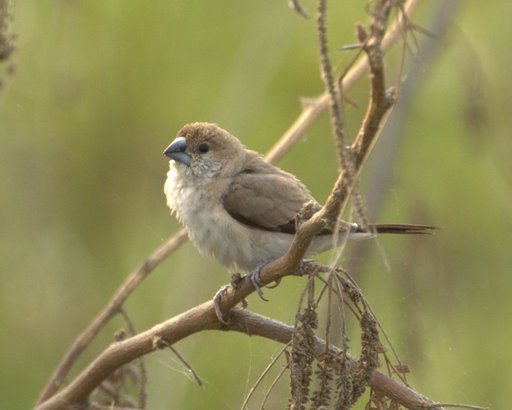|
| 질의: Small white | 결과: 808번째/2237 | |
Indian Silverbill (Lonchura malabarica) - Wiki
| 제목: | Indian Silverbill (Lonchura malabarica) - Wiki
| |

| 해상도: 512x410
파일크기: 27712 Bytes
등록시간: 2008:01:17 15:59:58
|
Indian Silverbill
From Wikipedia, the free encyclopedia
Order: Passeriformes
Family: Estrildidae
[Photo] Indian Silverbill (Lonchura malabarica), Thol, Gujarat, India. Date: August 1, 2007. Author: Ravi Vaidyanathan. URL: http://en.wikipedia.org/wiki/Image:Silverbill.jpg Copyright (C) 2007 Ravi Vaidyanathan
Permission is granted to copy, distribute and/or modify this document under the terms of the GNU Free Documentation License, Version 1.2 or any later version published by the Free Software Foundation; with no Invariant Sections, no Front-Cover Texts, and no Back-Cover Texts. A copy of the license is included in the section entitled "GNU Free Documentation License". |
The Indian Silverbill Lonchura malabarica also known as White-throated Munia is a small passerine bird formerly considered conspecific with the closely related African Silverbill, Lonchura cantans. This estrildid finch is a common resident breeding bird in most of Middle East and South Asia:Pakistan, Nepal, Bangladesh, India, Islamic Republic of Iran, Israel, Jordan (introduced), Kuwait (introduced), Oman, Puerto Rico (introduced), Qatar (introduced), Saudi Arabia, Sri Lanka, United Arab Emirates, USA (introduced) and Virgin Islands (possibly extinct).
Characteristics
The Indian Silverbill is a tiny gregarious bird which feeds mainly on seeds. It frequents dry open country and cultivation, especially near water. The nest is a large domed grass structure in a tree, into which 4???10 white eggs are laid.
The Indian Silverbill is 11???11.5 cm in length with a long black tail. The adult has a stubby silver-grey bill, buff-brown upperparts, white underparts and rump and dark wings. The sexes are similar, but immatures have buff underparts and a shorter tail.
http://en.wikipedia.org/wiki/Indian_Silverbill
| The text in this page is based on the copyrighted Wikipedia article shown in above URL. It is used under the GNU Free Documentation License. You may redistribute it, verbatim or modified, providing that you comply with the terms of the GFDL. |
|
^o^
동물그림창고 똑똑전화 누리집
^o^
|
|